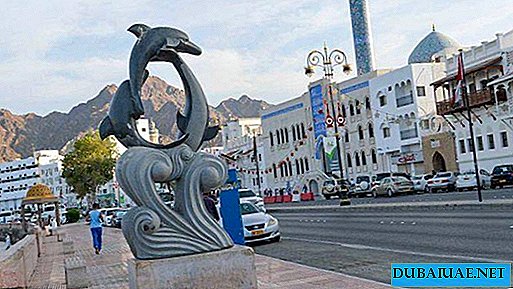 ARCHIPELAGUS OF SOCOTRA - ONE OF THE MOST MYSTERIOUS AND MYSTERIOUS PLACES ON OUR PLANET. THE ISLANDS SCROLLED IN THE ARABIAN SEA BETWEEN YEMEN AND SOMALIA KEEP THE NATURAL HERITAGE OF THE MEGACONTINENT OF GONDVAN, WHICH GIVEN THE BASIS OF MODERN MATERIALS. THESE TRAVELERS WHO DREAM TO FIND IN THE JURUSIAN PERFORMANCE HERE COME HERE, FORGET ABOUT THE EXISTENCE OF CIVILIZATION AND CREATE AN AWESOME PHOTO ALBUM.
ARCHIPELAGUS OF SOCOTRA - ONE OF THE MOST MYSTERIOUS AND MYSTERIOUS PLACES ON OUR PLANET. THE ISLANDS SCROLLED IN THE ARABIAN SEA BETWEEN YEMEN AND SOMALIA KEEP THE NATURAL HERITAGE OF THE MEGACONTINENT OF GONDVAN, WHICH GIVEN THE BASIS OF MODERN MATERIALS. THESE TRAVELERS WHO DREAM TO FIND IN THE JURUSIAN PERFORMANCE HERE COME HERE, FORGET ABOUT THE EXISTENCE OF CIVILIZATION AND CREATE AN AWESOME PHOTO ALBUM. Text: Natalia Remmer
Abode of grace
Socotra is a small archipelago of six islands, of which only three are inhabited - Socotra, Abd al-Quri and Samha. One of the most isolated archipelagos in the world is located in the Arabian Sea, 380 km from Cape Fartak on the Yemeni coast and 80 km east of Cape Guardafuy on the Somali Peninsula. The islands are a fragment of the giant megacontinent Gondwana, parts of which were modern Africa, Australia, South America, Hindustan, Arabia and most of Antarctica, which separated from it about 70 million years ago. Thus, Socotra became the Noah's Ark for dozens of representatives of flora and fauna, who, being isolated, managed to survive and survive to this day.
According to one theory, Socotra took its name from the ancient Sanskrit "Abode of grace." Lying at the crossroads of the sea routes - from Arabia to Africa and India, in the first millennium BC Socotra served as a major center of trade, primarily incense. The famous medieval Arab geographer of the XII-XIII centuries Yakut wrote: "Socotra ... the name of a great large island on which there are several villages and cities. It is located south of Aden, closer to the coast of Arabia than to the coast of India. Most of its inhabitants are Arabs - Christians: Aloe is brought from there, as well as Dam al-Ahawain - this is a gum of a tree growing only on this island, it is called al-katir, and it can be of two types: pure, which looks like ordinary resin (gummi), only red, and cooked from the first. "
Kill the dragon
Due to the unique flora and fauna, Socotra is called the Natural Botanical Museum or the Galapagos of the Indian Ocean: here you can find more than 200 species of plants that are not found anywhere else on the planet. They are called endemic - this means that their growth is limited only to this island.
The island’s landscape is strange and unearthly by awkward cucumber trees and the most amazing “dragon trees” that emit red resin like dragon blood. The age of many dragon trees is 4-5 thousand years. Most of the plants bloom by the end of spring. In winter it rains and strong winds blow, and in summer drought sets in, during which the temperature rises to +50 degrees Celsius.
The fauna of the island is not so diverse, but among the birds you can meet the Socotrian sparrow, nectaria or starling. By the way, it was birds in ancient times that helped the inhabitants of the island to collect cinnamon: birds made nests from it, which, under the weight of their prey, fell on the ground and crumbled. Socotrians could only find them and collect them in goatskin wineskins.
Travel notes
 If you are traveling around Socotra, you should definitely visit several places. First of all, this is the Khomkhil plateau - a fabulous land that can immerse you in the atmosphere of the primitive period. It is equally important to visit the Hawk Cave, or the underground temple, where ancient inscriptions can be found on the walls. This is almost a historical relic, given the fact that Socotrian writing still does not exist. Dihamri Marine Sanctuary is a great place for diving and snorkeling. Here you can find parrot fish, moray eels, numerous stingrays and sea urchins.
If you are traveling around Socotra, you should definitely visit several places. First of all, this is the Khomkhil plateau - a fabulous land that can immerse you in the atmosphere of the primitive period. It is equally important to visit the Hawk Cave, or the underground temple, where ancient inscriptions can be found on the walls. This is almost a historical relic, given the fact that Socotrian writing still does not exist. Dihamri Marine Sanctuary is a great place for diving and snorkeling. Here you can find parrot fish, moray eels, numerous stingrays and sea urchins.
One of the most inhabited places of the island is the fishing town of Qualencia. In the second largest city of Socotra, you can see many traditional houses, separated by narrow lanes, as well as a diverse catch of local fishermen. Here, on the southwest coast, is one of the most beautiful beaches of the archipelago - Detva Lagoon. A cozy bay and a snow-white sand spit stretched for several kilometers.
Socotra for a long time remained a destination closed to tourists. And today she is visited by real enthusiasts, only a few thousand people a year, which helps to preserve her pristine nature in many ways. From Dubai and Sharjah, you can fly there directly or with a change in Sana'a, the capital of Yemen. It would be very interesting to approach Socotra from the water and see it through the eyes of South Arabian merchants looking for provisions here. However, so far in the turbulent waters of Arabia such tours remain in the extreme category.
From the travel diaries of the Portuguese admiral don Juan di Castro of 1541: "The inhabitants of the island have their own way of life. They have no king, no governor, no prelate, no one at all who they obeyed and from whom they received orders. They live like wild animals, they lack any political life and legal organization. There are no cities or large settlements on the island. They live in caves, sometimes in huts. They are engaged in forestry and cattle breeding. They feed on meat and dates. They drink milk, although more often - plain water. Almost all they don’t carry crosses, and it’s hard to find a resident who would not carry a cross on his chest.
This is a beautiful race, it has the most attractive appearance among the inhabitants of this region. The inhabitants of Socotra are straight, tall, proportionately folded. Men have tanned faces. In women, faces are lighter and quite beautiful. On the whole island, no offensive or defensive weapons can be found, with the exception of only a few small rusty iron swords. Men walk naked, just for the sake of decency, putting on small loincloths that they make themselves. "
Denis Romanov, a professional guide to Socotra: “Socotra is very different from mainland Yemen. There is a completely different people who speak a unique dialect. Socotrian language belongs to the ancient Semitic language group. Despite the fact that it does not have a written language, this language is much more complicated than Arabic The huge vocabulary is transmitted within the family and the traditional community in the form of poems and fairy tales, the plot of which echoes the texts of ancient Egyptian papyri.
I first came to Socotra 10 years ago and immediately fell in love with this island. The lack of civilization and European conveniences familiar to Europe is more than offset by communication with a pleasant and friendly people who have been living in Socotra for centuries. Open, beautiful and noble faces testify to inner purity, not yet spoiled by money and consumption. However, everything is changing. In recent years, a network of roads has been built on Socotra, the number of cars is growing rapidly, and the first five-star hotel is already under construction in the capital Hadibo.
Tourists who are going to Socotra, you need to keep in mind that you can see all the beauty of the island only in the framework of camping tours, which include spending the night in tents in nature. The main format of leisure on Socotra is ecotourism. When you spend the night at a hotel in dusty Hadibo, you will never see magnificent sunsets and sunrises in the sands on the south coast, in the mountainous part of the island or on a beautiful deserted beach. "










